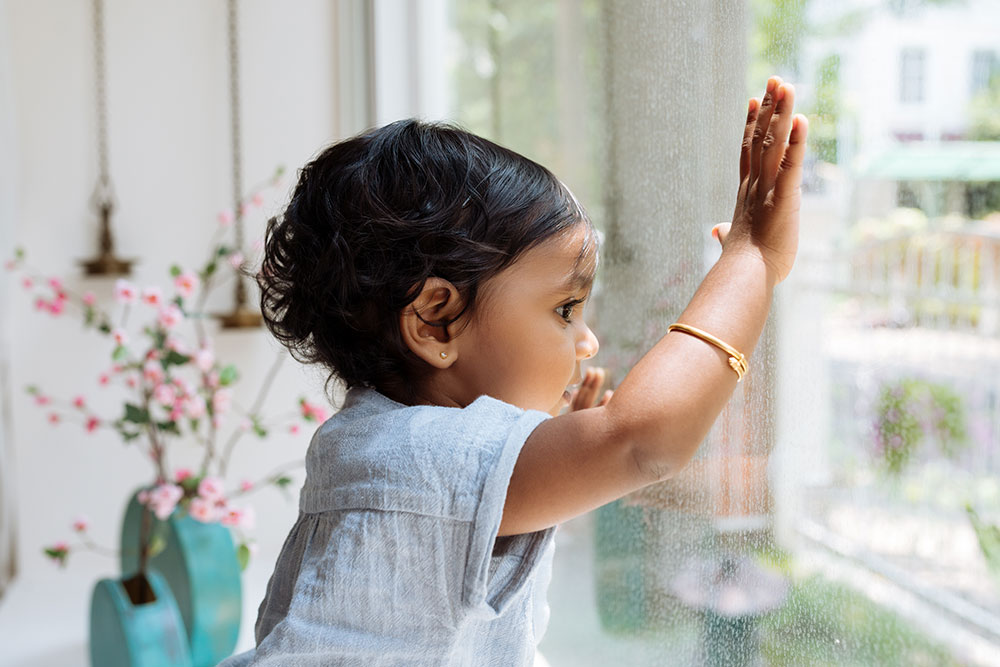
Childhood lead poisoning is a preventable, serious environmental health problem. Lead exposure is recognized as one of the most common environmental toxins for young children. The primary way in which most children are exposed to harmful levels of lead is through contact with deteriorating lead paint and lead contaminated dust. The typical hand-to-mouth activity of young children provides the pathway for lead to enter the body.
In most cases, children are exposed to lead by ingesting lead paint chips or dust contaminated by deteriorating lead paint. Interior dust can become contaminated with lead as the result of chipped or peeling paint in older dwellings (pre-1978 housing), friction caused by opening and closing windows with lead paint, or through the disturbance of lead paint during preparation of paint surfaces for repainting, paint removal, or remodeling. Less commonly, secondary sources such as water contaminated by its flow through lead pipes or brass fixtures, soil contaminated by lead dust, and certain consumer products that contain lead can be significant contributory sources. Young children absorb lead more efficiently than adults. Some of the protective mechanisms that are well developed in adults are immature in young children, thereby making them more vulnerable to the effects of some toxic chemicals.
Exposure to lead is associated with a range of serious health effects among young children. Lead is a systemic toxin that affects virtually all body systems. Lead exposure has been associated with anemia, hearing loss, diminished skeletal growth, delayed pubertal development, dental caries, and impaired neurologic development. Lead exposure is an important cause of preventable brain injury and neurodevelopmental dysfunction that is associated with detrimental effects on children’s cognitive and behavioral development, including measurable declines in IQ. Although there is no established threshold for the harmful effects of lead, the DHHR has defined BLLs ≥5 μg/dL as the definition of lead poisoning and the action level for public health investigation.
Sources of Lead Exposure
Lead-based paint hazards: Lead-based paint found in older homes is still the most important source of lead exposure in the environment. As homes with lead-based paint age, the paint begins to deteriorate. Deterioration is exacerbated around friction surfaces, surfaces affected by weatherization, and areas exposed to leaks or other types of structural damage. The dust created when paint breaks down is easily accessible to children since it often settles on floors or bare soil where they are most likely to play. Renovation or construction work done in older homes containing lead-based paint or other leaded material (e.g., ceramic tile, pipes, or glass) can also create lead dust in the environment of a child.
Take-home lead from occupations and hobbies: A number of businesses and industries in West Virginia use lead or lead products. By-products from these industries have been linked with elevated BLLs in adults and children. Parents or caretakers whose occupations or hobbies expose them to lead have the potential to transfer hazardous lead dust from their place of work or recreation to the car, home, or yard where it becomes accessible to young children or women of childbearing age. This type of exposure is called “take-home” exposure.
Consumer products: In West Virginia, consumer products containing unsafe levels of lead are a small yet concerning source of lead exposure to children. Products of significance include children’s jewelry, toys, vinyl mini-blinds, lead-glazed pottery, fishing lures and sinkers, tile, and ammunition. For information on previously recalled products with unsafe levels of lead, please refer to the following Consumer Product Safety Commission (CPSC) website:
Click Here
Home or folk remedies and cultural practices: Some common home or folk remedies and/or cultural practices involve lead. These practices include giving children azarcon or greta for health ailments, using kohl or surma for face and body painting or decoration, and eating imported candies.
Hobby/Occupational practices: Using lead-glazed or painted pottery, hobbies, and occupations associated with cottage industries (e.g., battery recycling, car repair) may be a source of lead exposure.